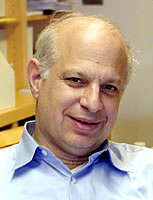The world is full of hidden dangers, in some people’s view. Some things that were thought harmless at some point in history have turned out to be genuine killers – lead, tobacco smoke, and asbestos, to mention only a few examples.
Our historical success in identifying unobvious dangers has lead some people to develop mental models where there is always a widespread behaviour or exposure that is next in line to be uncovered as a cause for illness and mortality. Others believe (as I do) that with time, the remaining environmental hazards to be discovered will be less and less important, because the size of the adverse effect correlates strongly to how easy it is to detect, and therefore most of the really dangerous stuff is probably already known.
Whichever attitude people take, most agree that it is best to base specific recommendations on a dispassionate reading of the scientific data. However, opinions differ greatly about how strong the evidence has to be in order to restrict something that might be dangerous. “The principle of caution” states that it’s better to regulate when we are uncertain. But how uncertain?
A useful guide for determining the strength of evidence has been proposed by Austin Bradford Hill (1965). Its criteria have been summarised as follows: Causality becomes knowable when scientific experiments demonstrate, in a strong, consistent (repeatable), specific, dose-dependent, coherent, temporal and predictive manner that a change in a stimulus determines an asymmetric, directional change in the effect.
In this post, which I fear will be rather lengthy, I will try to review the evidence for and against dangers of mobile telephones. The positive health effects are significant (easier access to medical advice and emergency services, in particular), but we will only look at the possible risks here.

There is a debate over the health risks of electromagnetic radiation in general. When we use a mobile telephone, we expose ourselves to an electromagnetic field which penetrates about 4 cm into the head. Some national authorities have defined exposure limits. For example, the Swedish Radiation Safety Authority requires that all phones cause less energy absorption than 2 W/kg in human tissues, a limit that has been more or less arbitrarily chosen on the base of acute radiation effects. Absorption of radiation causes tissues to become warmer, and 2 W/kg is far below any measurable thermic effect. (This is the general principle of the microwave oven, and the only completely indisputable biological effect of electromagnetic fields.)
Other dangers have been seriously investigated, particularly the risk of cancer and of neurological disorders such as headaches, dizziness, and dementia.
Loud activist groups are lobbying for more restrictions. The most authoritative critics are probably the BioInitiative Group. They released a report in 2007 urging the prohibition of strong electromagnetic fields. I purports to “document serious scientific concerns about current limits regulating how much EMF is allowable”. But although scientists are among the authors, the document is not a piece of scientific criticism. It is a jumble of cherry-picked research reports and unfounded claims. The authors are quite consistent in only mentioning research that supports their own point of view. Furthermore, they accept controversial data regardless of prior probability.
Let’s say that I were to investigate whether my zodiac sign is a strong risk factor for Parkinson’s disease. If I were to choose a confidence level of 95%, I would end up being wrong 5% of the time, which is the usual cutoff in science. Now, let’s say I get a positive result. Does that mean that sagittarians are at increased risk for Parkinson’s? No, because I have to take into consideration the prior probability that my result is correct. And our current understanding of disease physiology and the differences between people born at different times in the year makes such a result utterly implausible, at best. This is, incidentally, why it is impossible to prove that homeopathy works without first changing our understanding of the laws of chemistry.
The BioInitiative report, fearless of ridicule, is thus forced to conclude that since adverse effects of very low intensity electromagnetic radiation have been seen in cells in certain experiments, it must be the information conveyed by the radiation rather than the heat in the tissue that causes damage. It seems to be envisioning “death rays” that can be specifically tailored to destroy tissues, and that coincidentally are similar to the electromagnetic fields that surround us every day.
No, the BioInitiative report is not serious. What, then, do the big public agencies have to say?
The WHO has concluded that there is no increased risk for cancer or any other diseases, but that cell phones may lead to traffic accidents and may interfere with pacemakers. The EU:s expert group has concluded that there is no increased risk for cancer except possibly for a benign tumour called acoustic neuroma, and only for these who have used the cell phone for more than ten years, with almost a doubling of the incidence rate.
Here is where risk communication comes into the picture. About 80-100 cases of acoustic neuroma are diagnosed every year in Sweden, with a population around 9 million people. The risk is consequently about 1/100 000 for a person in a year. An increase in the relative risk by 100% corresponds, then, to an increase in the absolute risk from 0.001% to 0.002%.

MRI image showing an acoustic neuroma
And this is the most tangible risk. With regards to other types of cancer and neurological diseases, risks completely fail to pass the Hill criteria. The effects, if any, are weak, inconsistent, unspecific, weakly dose-dependent if at all, incoherent and unpredictive. Sadly, space does not permit me to go through the entire literature in this post, but good summaries are available from the WHO and the EU.
In spite of the lack of evidence, the campaigners are making headway. In September 2008, MEPs voted 522 to 16 to urge ministers across Europe to bring in stricter radiation limits and said: “The limits on exposure to electromagnetic fields (EMFs) which have been set for the general public are obsolete. The European Parliament is greatly concerned at the Bio-Initiative international report which points in its conclusions to the health risks posed by emissions from devices such as mobile telephones, UMTS, WiFi, WiMax and Bluetooth, and also DECT landline telephones. The plenary therefore calls on the Council to […] set stricter exposure limits.”
The politicians have to listen to the people, after all, even when the people are wrong. The whole conundrum is hilariously exposed in this episode of “Yes Minister”. (Go to YouTube for the remaining parts of the episode.)
In my opinion, the moral of the story is not that our elected leaders must stand up for science (although that is also true), but that we must all aid and assist our decisionmakers to behave rationally. If they think people want homeopathy and prohibition of GMO-crops, then that is what we will end up with.
When we have superior knowledge, the democratic right to share it is also a duty.



 Posted by evolvingideas
Posted by evolvingideas 



